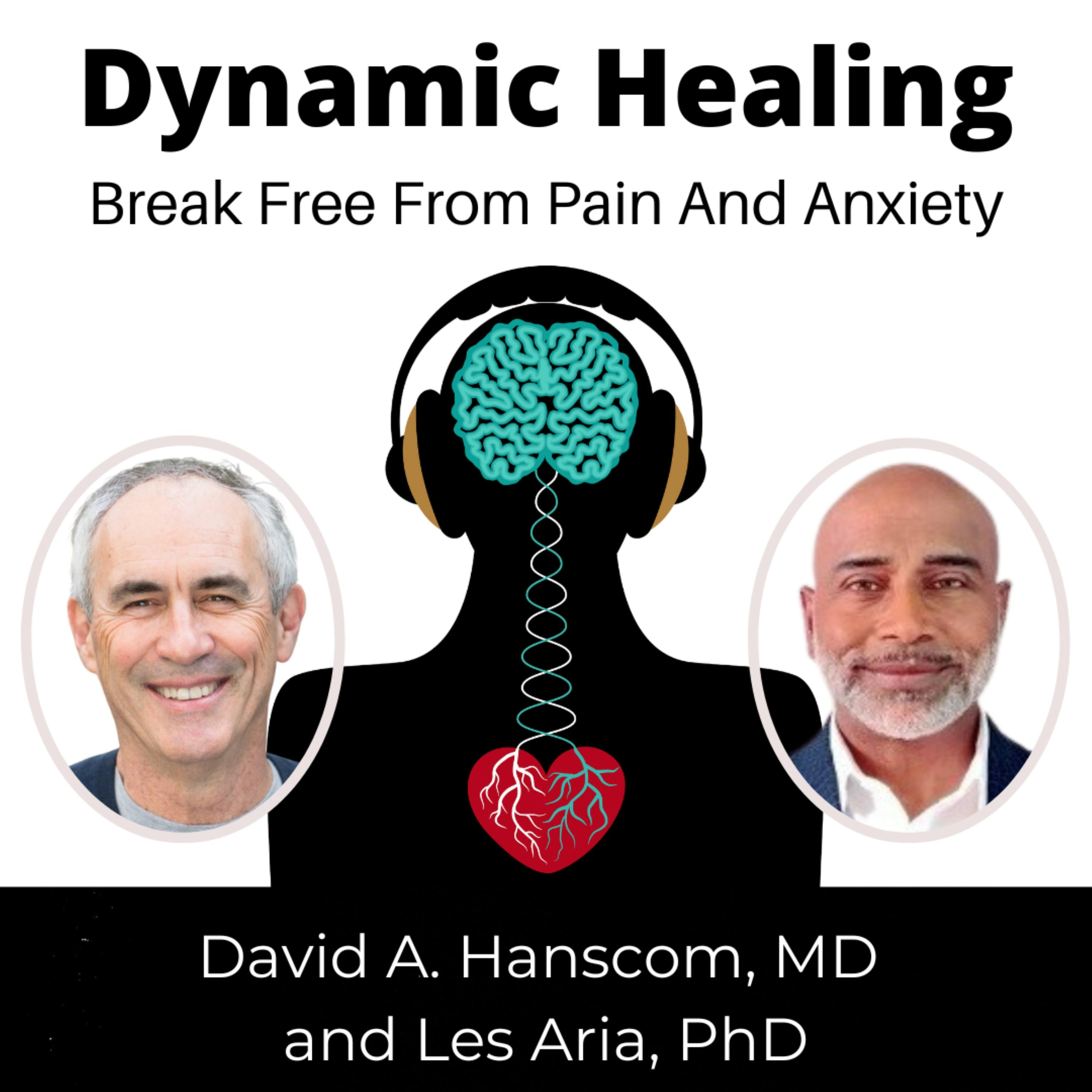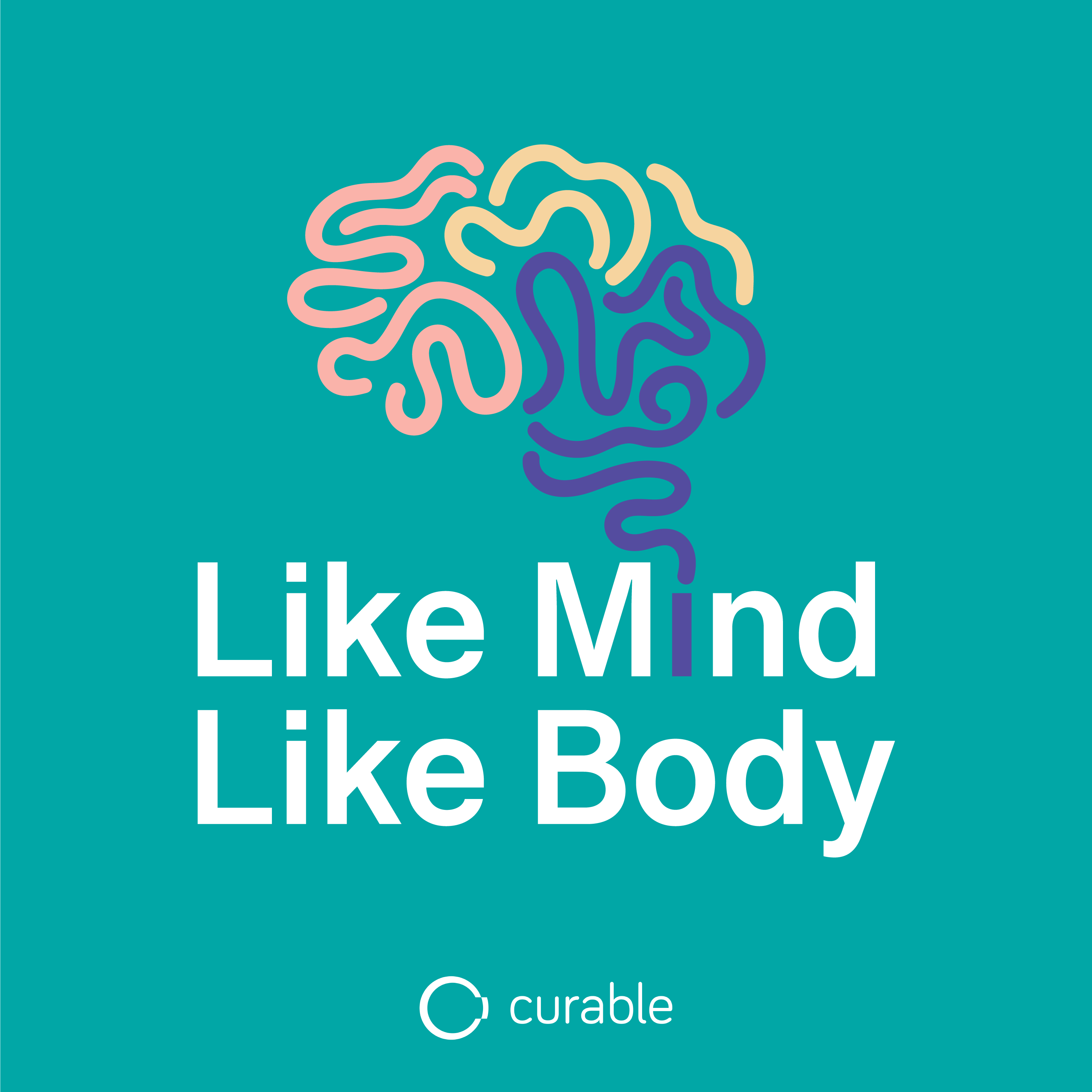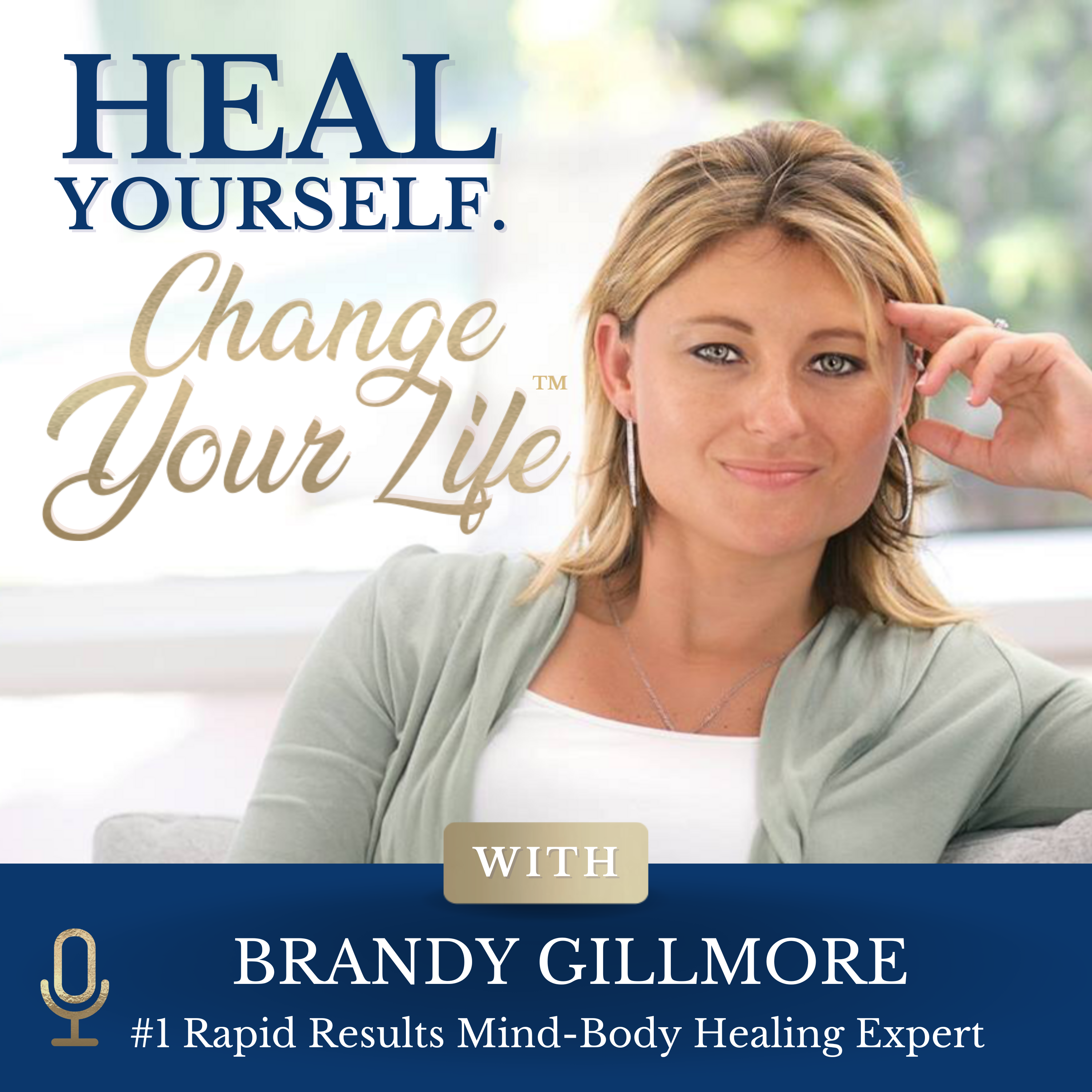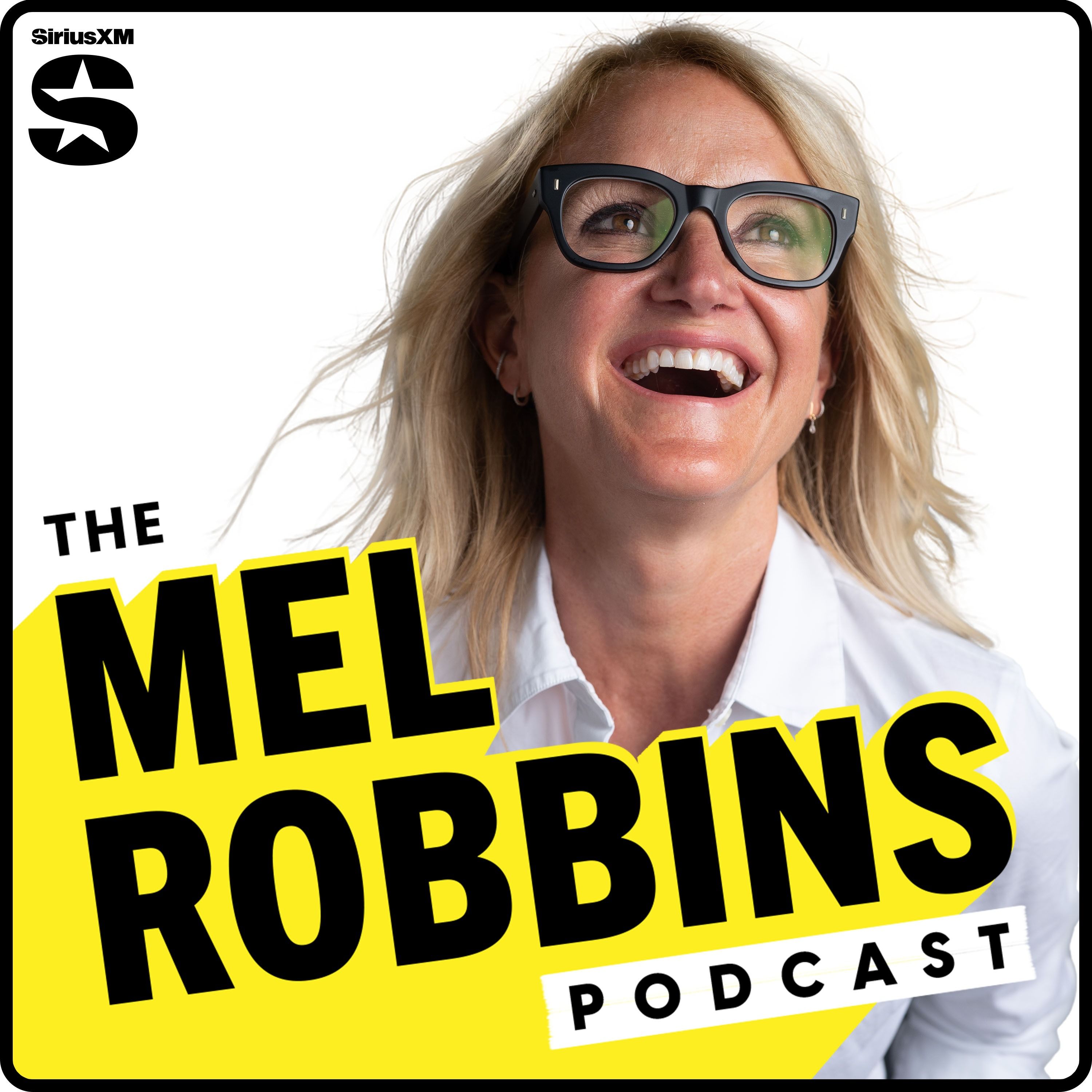
Migraine Healing Oasis
A podcast sharing information, support, and healing strategies based on the science-backed MindBody Connection and Healing approach to reversing Migraine pain for sustainable relief.
The host, Karen Ash, ACC suffered (past tense) from Chronic Migraine for 34 years before finding the work of Dr. John Sarno, Nicole Sachs, LCSW, Dr. Howard Schubiner, Alan Gordon, LCSW, the Curable App, and others educating on the role stress and emotions have in dysregulating our nervous system, sending unsafe signals of danger to the Brain, which triggers pain as a protective mechanism to remove us from the treat.
While this information can be used for any MindBody Chronic Pain condition, I felt it important to create a community for the 1.16 BILLION living with Migraine to come together and speak about the nuances of our unique pain experiences. Join us to gain more pain-free days, one episode at a time! xx
Migraine Healing Oasis
Ep 17. Do You Have Chronic Migraine? That Depends Who You Ask — Mindbody vs. Traditional Medicine
Are your symptoms “chronic”? What does that even mean—and why does it matter?
In this video, we unpack the difference between the traditional biomedical model and the mindbody (biopsychosocial) approach to defining chronic migraine. I'll breifly touch on what neuroplastic pain is, how nervous system dysregulation plays a role, and why persistence—not frequency—is the key factor for the mindbody approach. Most importantly, I'll touch on how chronic symptoms can be reversed.
If you've ever wondered, “Does this approach apply to me?” — this is for you.
++++++++++
00:00 – 📍 Understanding Chronic Pain: An Introduction
00:25 – ⚕️ Traditional (Biomedical) Model vs. 🧠❤️ Mindbody (Biopsychosocial) Medicine
00:58 – 🌿 Holistic Approach to Chronic Pain
01:56 – 🔁 Importance of Persistence (Not Just Frequency)
03:22 – 🧠 Neuroplastic Pain Explained
04:09 – 🚨 Nervous System Dysregulation as a Root Cause
05:04 – 🧠💥 Brain's Role in Pain Perception
06:01 – 🔄 Reversing Neuroplastic Pain
06:50 – 💬 Final Thoughts and Encouragement
++++++++++
My Resources:
✅ 1:1 COACHING: Book a FREE 25 Minute Consultation
✅ FREE GUIDE: "5 Things I Wish I Knew Sooner That Helped Me Finally End Chronic Migraine!"
✅ COURSE WAIT LIST: "Intro to MindBody Healing" Coming Soon - sign up to receive information on the next dates
____
Thanks for listening - I hope you found this helpful.
FIND ME HERE @ www.migraineoasis.com/linkinbio
Let's continue the conversation...COME SAY HI!
✅ INSTAGRAM: Follow Migraine Oasis @MigraineOasis
✅ FACEBOOK: Join our Community @MigraineOasis
✅ YOUTUBE: Watch us @MigraineOasis
____
Education and techniques discussed in this Podcast originate from many sources, countless hours of research, training, and self-healing unless otherwise noted.
Music credit: MomotMusic, Kyrylo Momot
___
Disclaimer: Information provided by Migraine Oasis & Karen Ash is for general informational & educational purposes only & is not a substitute for medical advice, psychotherapy, or counselling. Utilizing any of the education, strategies, or techniques in the podcast is done at your own risk. Consult with a physician before engaging in any suggested movements. If in immediate danger, call a local emergency number or go to the nearest emergency room.
I get asked sometimes, what do I mean by chronic? We're talking about neuroplastic pain and symptoms, as in migraine. What exactly is the definition? And it differs between the traditional medical model and the biopsychosocial model, which is used when we're talking about mind body symptoms and this holistic approach. I wanna go over both and why I think that matters. So in the traditional approach, the biomedical approach, a definition from the International Classification of Headache Disorder would be 15 migraine days a month lasting for three or more months. This factors in, in the traditional medical model when you're trying to get on certain medications as an example. The only way that I could be eligible for a CGRP, was to have chronic migraine and the classification of 15 or more a month. I had 17 a month, so I was qualified to try that medication. If we're looking at it from the biopsychosocial model, which is a more holistic way of looking at it, you're looking at the biology, the psychology, and the social aspects of a human being. What makes up the human existence. It is your biology. Yes, there is some genetics to certain things. We know with epigenetics, that's genes can be expressed, but they can also be turned off. Your psychology, the emotional state that you're in, the stress that you're under, all the different factors of your lifestyle, whether you have a social network, if you feel connected, if you feel very isolated. All these things factor in. We look at the mind body connection and what thoughts are leading to your emotions which are showing up in your body. So this is a more holistic approach. This model, we look at chronic as being persistent or reoccurring over time for more than three months. Why this is important I think, is because the number doesn't necessarily matter when it comes to mind body medicine. It's more of the persistent nature and how often it's reoccurring. Now I say three months or more and this is generally what's used by the ATNS, the Association for the Treatment of Neuroplastic Symptoms uses three months as the marker. Dr. Howard Schubiner, which is one of the experts in this field, he uses three months. Dr. David Schechter uses six months, and that's a little bit more of a conservative approach, so you may see it being stated as six months or more to have the symptom. Getting back to why I think this matters is because when people are asking me this question, it's more like, oh, well will this help me? Because I only have only in air quotes. I only have eight a month or I have four a month. And so mine aren't considered chronic. That might be in the traditional medical model, but when you're talking about mind body medicine and this biopsychosocial model, we consider that as significant. That is too many. To have one a month is too many. To have one in your lifetime is too many, as far as I'm concerned, but it's more of the persistent nature and why. Because we know that the neural pathways in the brains, the brain circuitry is involved then. If it is going more than three months. When I'm talking about neuroplastic symptoms, let me clarify this really quickly here, because it's important that this is primary pain. This is the migraine is your symptom. There's no secondary cause to it. There's no disease causation, or an infection or a tumor, there's a structural issue, something like that. That is not a neuroplastic pain or symptom, that is a problem within the body that needs to be treated with the traditional medical model. What we're talking about is the pain and symptoms that persist longer than three months. And then we know, right, there's a neural pathway that's been created in the brain. The brain has essentially learned the pain and symptom, and we need to go in with neuroplasticity, brain retraining, calming the nervous system. Usually there has been a dysregulation of the nervous system, either being, in fight or flight. You're just raging with cortisol and the adrenaline and all the things that come along with being in this sustained fight or flight, which many of us are in this modern lifestyle, unfortunately. Or you've numbed out and gone the opposite way and gone down the ladder. If you're looking at the polyvagal theory of, of nervous system regulation and end dorsal vagal or shut down phase freeze, um, dissociation, burnout type of thing. So it's to one extreme or the other. It's, you know, there's a spectrum. It's all in between there. So you're constantly, your nervous system is regulating and dysregulating all day, every day. It's not the point of trying to keep in constant regulation. That's impossible. We're human beings. It's never gonna be possible. It's just to get good with riding those waves. But. Back to the point, if your nervous system stays in a dysregulated state, this is a cause for the brain to say, okay, we are in danger, something's wrong. We need to move in to protect. And pain is a protection mechanism. The brain moves in with pain to protect against something. Typically, if it's a structural thing, it's a broken ankle, it's a hot stove that you just touched and you are being put in pain as a protection so that you don't move that body part or don't touch it further so that you don't do further damage. But in the case of a neuroplastic pain and symptom, you don't have that structural damage to the body. There is no disease or structural causation to it. So this we know is brain generated and within the latest in neuroscience and pain science and brain reprocessing therapy, knowing that the brain is neuroplastic and this can be reversed. The brain can learn it, but it can also unlearn it. And that comes with all the different tools and things that we talk about on this channel. If you get a stomach ache or maybe you get a migraine every once in a while, like once a year or something like that. That's not chronic in nature, but it does still have to do with the mindbody connection and looking for themes around what could be the root cause of that still may be helpful. This work is more for when it becomes embedded in a brain circuitry and it has been learned by the brain and what we can do to reverse that, which it can, migraine can be reversed. Just to reiterate that. And chronic pain and symptoms typically are neuroplastic in nature. I read a statistic of 85 to 90% of all chronic pain and symptoms are neuroplastic in nature. I hope that helps because I really want to make sure that people who are questioning if this can help them because they're thinking, oh, I'm not in chronic per the definition that I've read. No, it is anything that is reoccurring for more than three months. Look at it as the timeframe, not the number. And this is how you will tell if this maybe can help you or not. And if you have any questions, leave it in the comments and I will be happy to see if there's anything I can do to help. Thanks for joining me today, and I hope to see you soon.
Podcasts we love
Check out these other fine podcasts recommended by us, not an algorithm.

The Cure for Chronic Pain with Nicole Sachs, LCSW
Nicole Sachs, LCSW
Tell Me About Your Pain
Curable and Alan Gordon LCSW
Dynamic Healing with David Hanscom MD and Les Aria PhD
Mind Body Spirit.fm
Like Mind, Like Body
Curable: the program for chronic pain recovery through mindbody medicine
Heal Yourself. Change Your Life™
Brandy Gillmore
Being Well with Forrest Hanson and Dr. Rick Hanson
Rick Hanson, Ph.D., Forrest Hanson
The Mel Robbins Podcast
Mel Robbins

